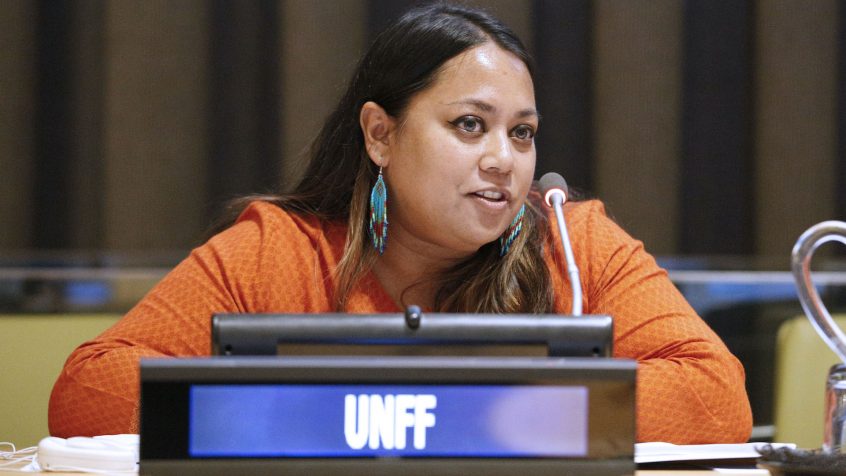
Forests – a lifeline for people and planet
We all rely on forests. They generate the oxygen we breathe, provide water to quench our thirst and livelihoods to some 1.6 billion people worldwide. They play a critical role for a healthy climate, and ultimately, for our survival. Yet, they continue to be under threat. Ahead of this year’s International Day of Forests, we spoke with Mita Sen in the UN Forum on Forests in UN DESA, about the state of our world’s forests and what must be done to protect them.
Why are forests so important for our life here on Earth?
“It is difficult to picture life on Earth without forests and trees. Forests sustain our lives in so many ways, from the air we breathe and the water we drink to the food we eat and the wood and paper products that we use every day.
Over 1.6 billion people depend on forests for timber, food, fuel, jobs, and shelter, but all of us depend on forests in one way or the other. Forests provide critical ecosystem services that affect our climate, rainfall patterns, and watersheds, at the same time they are also home to 80 percent of all land-based biodiversity. According to some estimates, the economic value of ecosystem services provided by the world’s forests could be worth as much as US$16.2 trillion annually.”
What is the state of the world’s forests?
“The good news is that over the past 25 years, the annual rate of net global deforestation has slowed by more than 50 percent. This is due to governments and stakeholders working to sustainably manage forests, along with investing in restoration and afforestation of degraded forests and land.
The bad news is that despite these efforts, forests continue to be under threat. Annually, over 7 million hectares of natural forests are still lost, mostly through conversion to other land uses – such as large-scale commercial agriculture and other economic activities. Forests are being negatively impacted by land degradation, ecosystem fragmentation, invasive pests, diseases, and frequent forest fires – many of which are exacerbated by the effects of climate change.”
What action is needed to further protect them, and how can people help the world’s forests?
“In terms of action at the UN level, the UN Strategic Plan for Forests 2030 provides a blueprint for action, through a set of six Global Forest Goals and 26 associated targets to be achieved by 2030, which are voluntary and universal. The vision is for a future world in which all types of forests and trees outside forests are sustainably managed. The only way we will get there is if we increase and promote sustainable management of forests, while at the same time working collectively to halt deforestation and forest degradation.
At the UN we work by bringing together governments and all stakeholders – to foster sharing knowledge and collective and coordinated action. But people everywhere can help, the first step is to make informed green choices in your daily lives – this could include purchasing products sourced from sustainably managed forests, buying local, or supporting your community’s green spaces. Any action you can take that reduces your carbon footprint, ultimately helps forests.”
This year’s celebration of the International Day of Forests focuses on forests and biodiversity. What more can you tell us about the Day?
“The International Day of Forests is observed annually on 21 March, and this year’s theme focuses on promoting awareness of the interconnections between forests and the biodiversity that they support. The 2019 landmark report from the Intergovernmental Science-Policy Platform on Biodiversity and Ecosystem Services sounded the alarm that the health of our ecosystems is declining at unprecedented rates and the rate of species extinctions is accelerating. If we wish to take action to turn the tide, sustaining forests are a critical part of the equation.”
For more information: International Day of Forests
Photo courtesy of IISD/ENB

Follow Us